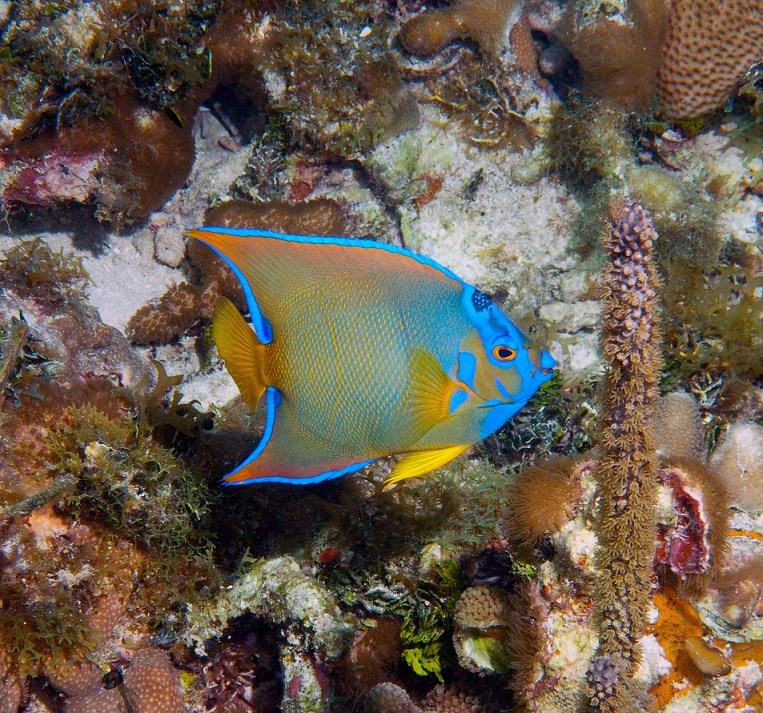
Park visitors may experience a kaleidoscope of colors and frenetic movements. Blue neon gobies and yellow striped porkfish punctuate a background of golden-brown elkhorn corals and swaying purple sea fans. A loggerhead sea turtle takes a breath at the surface as a young nurse shark settles to the bottom. |
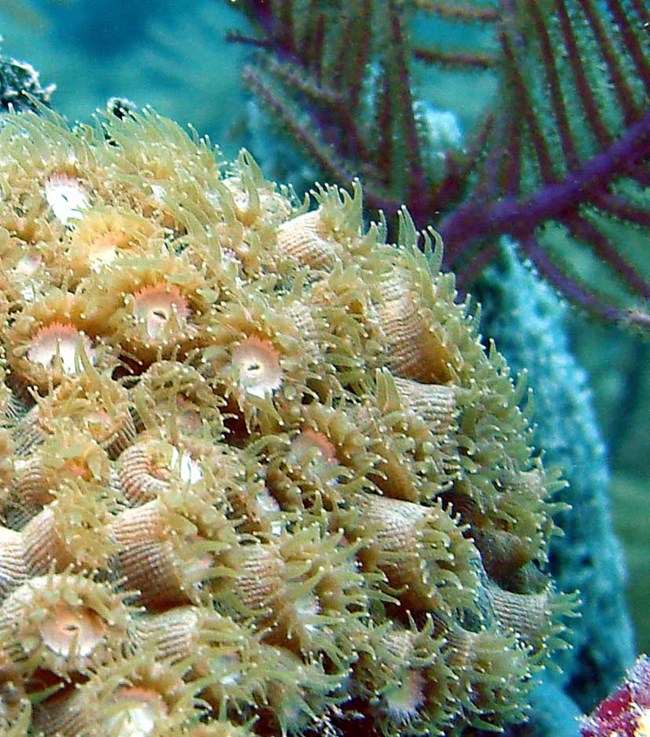
Other reef dwellers include sea whips, sea fans and other soft corals that sway in the current and give the whole reef the appearance of movement. Bright sponges filter small plants and animals from the water. Christmas tree worms burrow into stony coral skeletons, adding tufts of red, orange and purple to the grooved surfaces of brain corals. Algae and other plants are important food sources for fish, shrimp, crabs and a myriad of other animals. 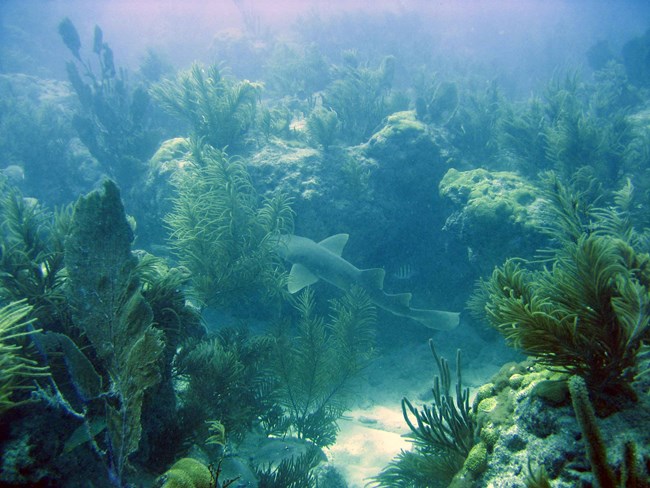
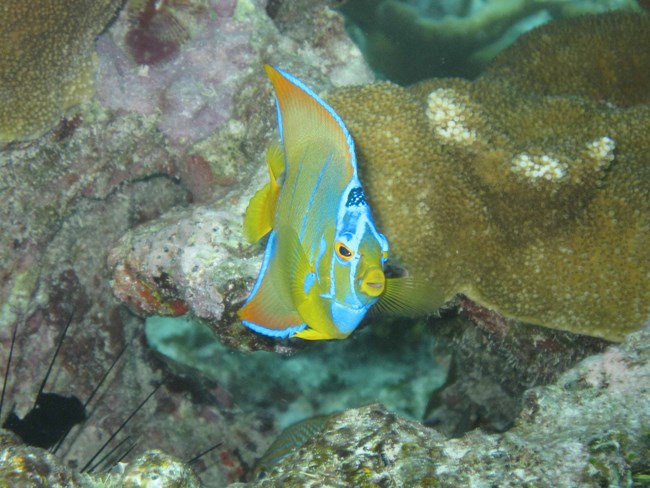
For many, it is the fish that give reefs their magical qualities. The park is home to an incredible array of over 500 species of reef fish. The diversity of colors, shapes, sizes and behaviors is amazing. Inch long damselfish nip at diver facemasks, attempting to chase them away from carefully tended algae gardens. A green moray hovers nearby, mouth agape, at the entrance to its lair. A variety of fish wait at a "cleaning station" where tiny gobies scour their bodies for parasites. A stoplight parrotfish chomps on coral, devouring algae, polyps and stone in bites. A 500 pound goliath grouper peers out from under a ledge. A pair of spotfin butterfly fish float effortlessly through the water. |
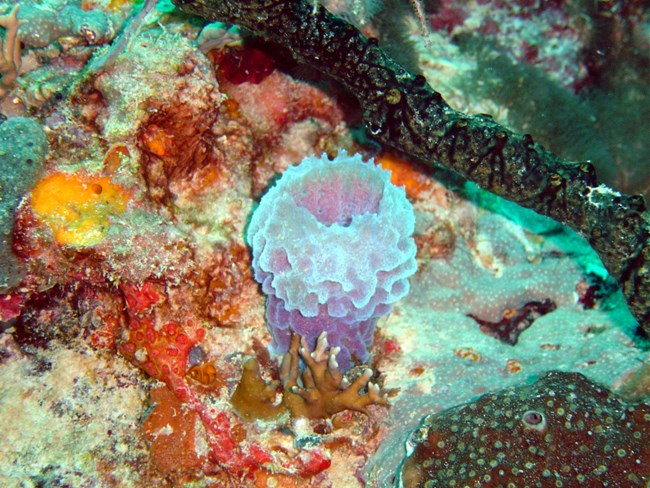
Coral reefs are among the most biologically diverse ecosystems on earth. Every crack and crevice seems to be occupied. Knowledge of reefs is constantly growing. This knowledge will be increasingly valuable as reefs around the world experience problems from pollution, overfishing, boat groundings, climate change, marine debris and disease.
Simple things you can do to make a difference for the health of the reefs include avoiding anchoring on hardbottom, never tossing debris overboard and retrieving fishing gear and line that gets away from you. 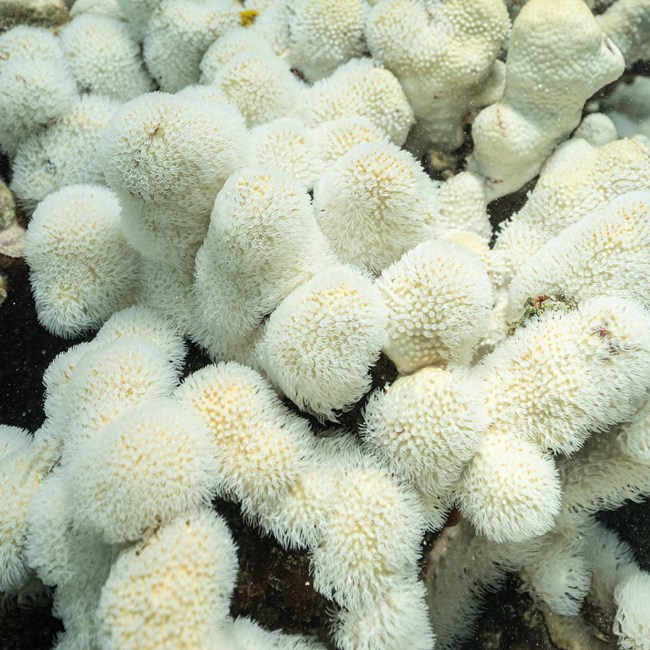
NPS photo by Peter Wintersteen Corals often respond to stress, such as increased water temperatures, by expelling the colorful algae called zooxanthellae that live within their clear tissues. When this happens, the coral appears 'bleached' as its white skeleton is visible through its tissues. As zooxanthellae provide most of the coral polyp's food, prolonged bleaching can cause the polyp to starve. Additionally, bleaching weakens corals making them more susceptible to disease and injury. If stressors subside in a timely fashion, corals can take in new zooxanthellae and survive bleaching events. The Effects of Coral Bleaching 

Left image
Right image
The Effects of Coral Bleaching, Continued 

Left image
Right image
|
Last updated: December 10, 2023
